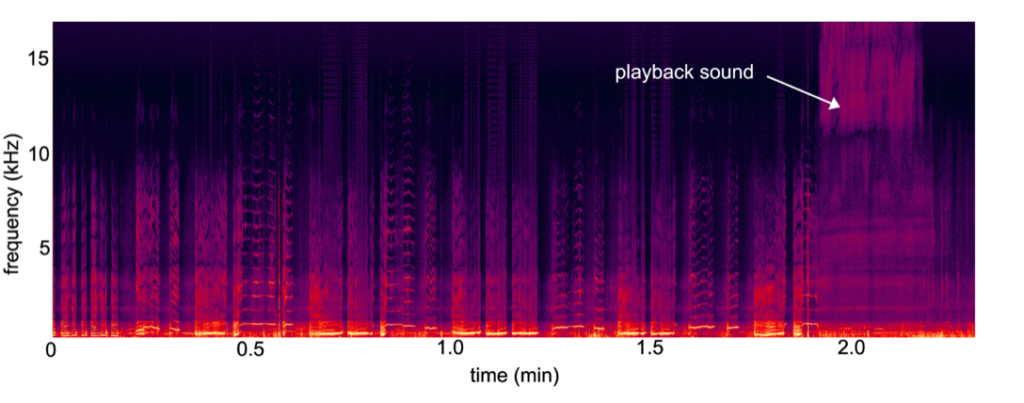Anthropogenic ocean noise (caused by human activity) is a threat to marine mammals and can negatively impact their ability to communicate, navigate, detect prey and predators, and find a potential mate.
Large baleen whales are particularly vulnerable, since many populations were decimated by commercial whaling and have since, failed to recover. Knowledge of an animal’s hearing range (i.e., which frequencies of sound they are sensitive to) is critical in mitigating the harmful effects of anthropogenic noise. Unfortunately, the techniques for measuring the hearing of smaller marine mammals, such as dolphins and sea lions, have not been successfully applied to a single baleen whale. As a result, scientists, legislators, and industries are lacking critical data needed to make informed decisions to protect baleen whales from anthropogenic noise.
Humpback whales migrate from Alaska to Hawaii every winter to give birth to calves and to mate. Male humpback whales are well known for producing whale song, which is one of the most complex vocalizations in the entire animal kingdom. Songs can last for hours and consist of repeating, highly structured, rhythmically-spaced sounds not unlike a melody. Recently, a team of scientist led by the NMMF developed a technique to measure the hearing range of humpback whales. When a playback sound is presented to a singing whale from an underwater speaker, the singer will often immediately change his singing behavior by skipping a beat, singing the wrong part of the song, or may simply stop singing. The immediate change in singing behavior in response to the playback sound can be used to test which frequencies baleen whales can hear.

A “spectrogram” of a segment of whale song, with a playback sound. In this example, the whale stopped singing immediately after the onset of the playback sound, providing evidence that the whale could hear the sound. By presenting sounds of different frequencies, and monitoring if the whale changing his singing behavior, the hearing range of the humpback whale can be determined.


